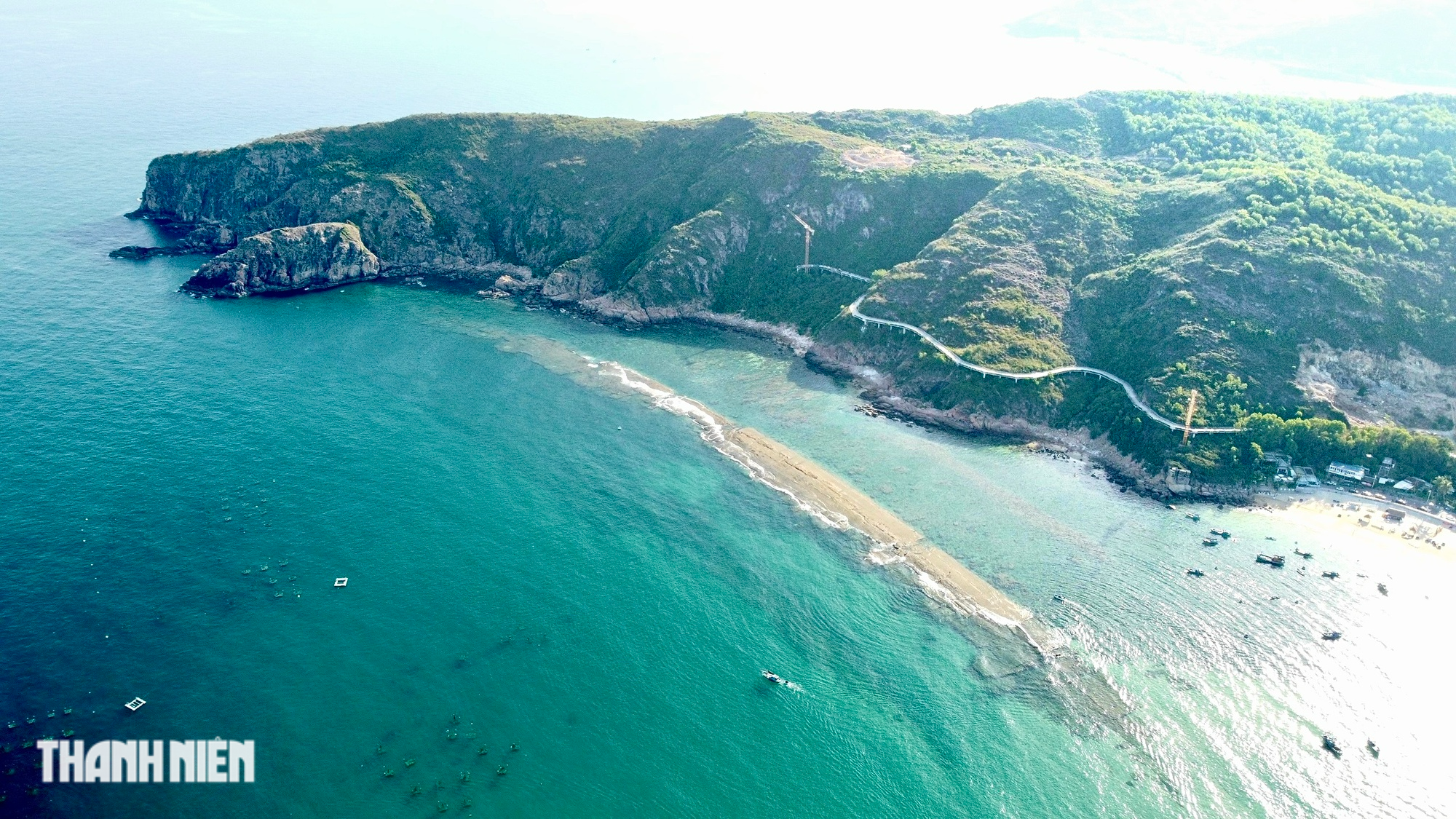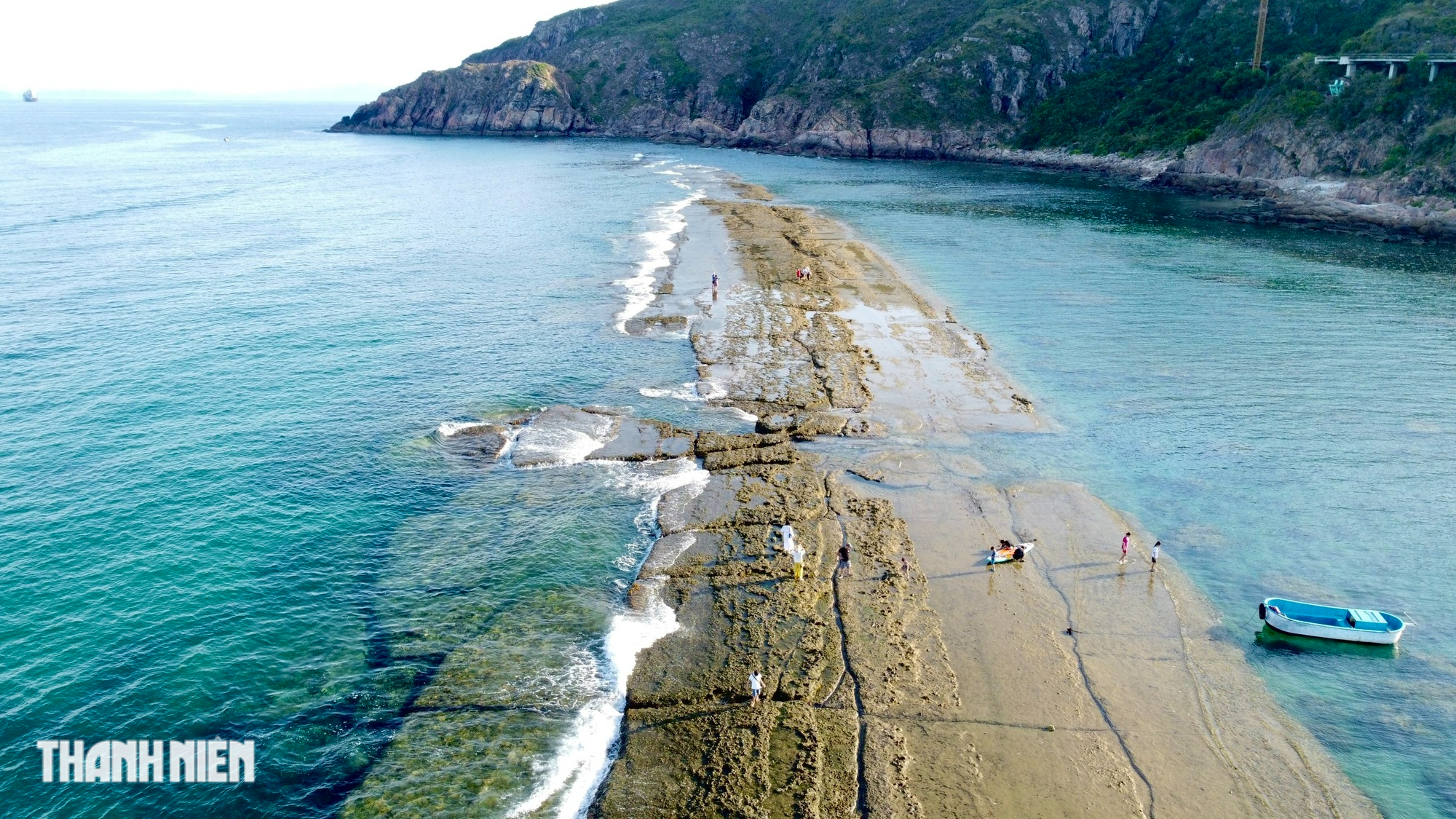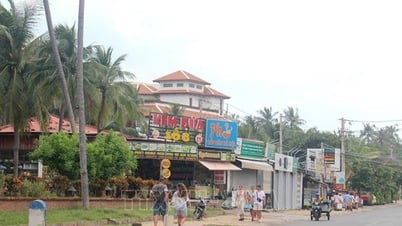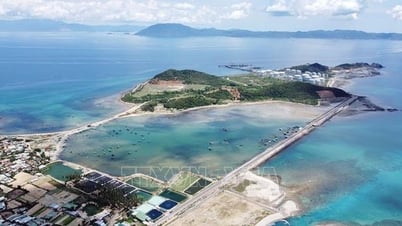The wall connects the cliffs of Hai Nam village (Nhon Hai commune, Quy Nhon city) to Hon Kho island of Hai Dong village. The wall surface is flat, more than 10m wide but the height is not yet determined. Many local fishermen confirm that this wall is not built of stone or brick, but of solid mortar.

Ancient wall under the sea of Quy Nhon city
Not far from the wall, in Hai Giang village (more than 5 km), there is also a wall submerged under the sea level. When the tide is low, you can see a section of the wall more than 3 km long near the shore, which is called Rang Cau by local people.
These two sections of the ramparts have similar structures, so many people assume that they are one long wall. However, no one knows exactly how long this wall is or when it was built.
In the mountainous area of Hai Giang village, there is a long stone rampart surrounding the top of Tam Toa mountain (belonging to Phuong Mai mountain system) of Hai Minh area (Hai Cang ward, Quy Nhon city). The rampart was built by stacking mountain stones of different sizes. In places that are still intact, the height of the stone rampart is about 1 - 1.5m, the base is 2m wide, the surface is 1.2m wide.

The wall is exposed when the water is low.
Experts believe that Nhon Hai citadel and the stone ramparts on Tam Toa mountain are different defensive structures. According to ancient documents, the Champa people built four large citadels in Binh Dinh, including Thi Nai (Tuy Phuoc district), Do Ban (An Nhon town), Chas (An Nhon town), Uat Tri (Tay Son district) and several other small citadels. However, to date, no documents have been found mentioning the citadels built in the Nhon Hai sea area.
People in Nhon Hai commune said that they do not know when the walls were built here, but they were first visible more than 40 years ago when the tide was low. Each month, only a few days when the water is low do the walls appear, usually on the 1st and 15th of the lunar month.
Up to now, the archaeological work on the wall is still facing many difficulties, so the wall continues to be a mystery. Mr. Bui Tinh, Director of Binh Dinh Provincial Museum said: "We have taken many samples from this wall for research, but there are still no results. Up to now, there are still no documents about the origin of this wall. To be sure of the origin, we have to send samples abroad for examination, but the cost is very high so it has not been done yet."
In addition, Mr. Tinh also shared that in recent years, many units have come to survey and learn about the wall, but there is still no conclusion about its origin.
Source link


































































































Comment (0)